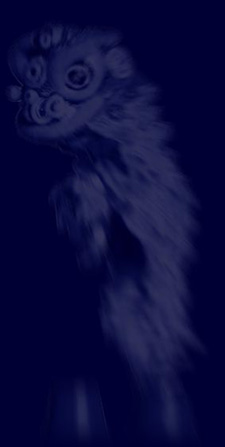When
is Chinese New Year
Chinese
New Year begins with the New Moon on the first
day of the new year and brought to an end on
the full moon 15 days later. The 15th day of
the new year is concluded with the Lantern Festival,
which is celebrated at night with children exhibiting
lanterns in the festivities.
The
Chinese calendar is based on lunar and solar
movements. The lunar sequence is about 29.5
days. In order to "catch up" with
the solar calendar the Chinese include an extra
month once every few years (seven years out
of a 19-year sequence). This is equivalent to
adding an extra day on leap year. This is why,
in relation to the solar calendar, Chinese New
Year falls on a different day each year.
This
upcoming year 2004, the New Year 4702 will fall
on Thursday, January 22 and represent the Wood
Monkey on the Chinese Zodiac.
Celebrating
Chinese New Year
New
Year's Eve and New Year's Day is a family event,
when members unite and wish each other happiness
and respect ancestors. The celebration was traditionally
emphasized with a ceremony given in reverence
of Heaven and Earth, the gods of the household,
and family ancestors.
The
sacrifice to the ancestors, the most important
of all the ceremonies, united the living members
with those who had passed away. Departed relatives
are commemorated with utmost respect because
they were responsible for laying the foundations
for the fortune and glory of the family.
House
Cleaning:
The entire house should be cleaned before
New Year's Day. On New Year's Eve, all cleaning
equipment are put away. Sweeping or dusting
should not be done on New Year's Day for fear
that good fortune will be swept away. In sweeping,
there is a superstition that if you sweep the
dirt out through the front entrance, you will
sweep away the family's good fortune; it should
be swept to the center of the house and then
carried out the back door to produce no harm.
Personal
Appearance:
Appearance and outlook during New Year's sets
the mood for the rest of the year. On New Year's
Day, a person is not suppose to wash their hair
because it would wash away good luck for the
New Year. Red clothing is favored because it
is regarded as a vibrant, happy color, assured
to bring the person an optimistic future. Children
and unmarried friends, as well as close relatives
are given hong bao, little red envelopes with
crisp dollar bills enclosed, for good luck.
Other
Activities:
All debts had to paid by this time. Nothing
should be lent on this day, as anyone who does
so will be lending all the year.
Everyone
should refrain from using foul language and
bad or unlucky words. Negative terms and the
word "four" (Ssu), which sounds like
the word for death, are not to be spoken. Death
and dying are never mentioned and ghost stories
should not be told. References to the past year
are also avoided as everything should be turned
toward the New Year and a new beginning. If
you cry on New Year's day, you will cry all
through the year. Therefore, children are tolerated
and are not spanked, even though they are mischievous.
Oranges
and Tangerines:
Etiquette suggests that you must bring a bag
of oranges and tangerines and include a lai
see when visiting family or friends during the
15-day Chinese New Year celebration. Tangerines
with leaves intact ensures that a person's relationship
with another remains secure. For newlyweds,
this represents the diverging of the couple
into a family with many children. Oranges and
tangerines are symbols for abundant happiness.
When
the lion eats an orange during a lion dance
performance, the skin represents gold and when
it is spit out, it symbolizes spreading of wealth
and fortune.
Candy
Gifts:
A candy tray arranged in either a circle or
octagon is called "The Tray of Unity"
and has an alluring variety of candy, which
each piece represents some sort of good fortune.
After taking several pieces of candy from the
tray, adults place a red envelope (lai see)
in the center compartment of the tray. Here
is a list of some candy and what they represent:
Other
foods consist of a whole fish, to represent
unity and abundance, and a chicken for prosperity.
The head must be included with the chicken as
well as the tail and feet to symbolize wholeness.
Noodles should be uncut, as they represent long
life.
If you would
like more learning resources, activities, and
craft ideas that relate to Chinese New Year,
Kids
Domain has a good listing of links.
*
Information for this page was taken from http://www.educ.uvic.ca/faculty/mroth/438/CHINA/chinese_new_year.html

HAPPY
NEW YEAR ... Y'ALL!

